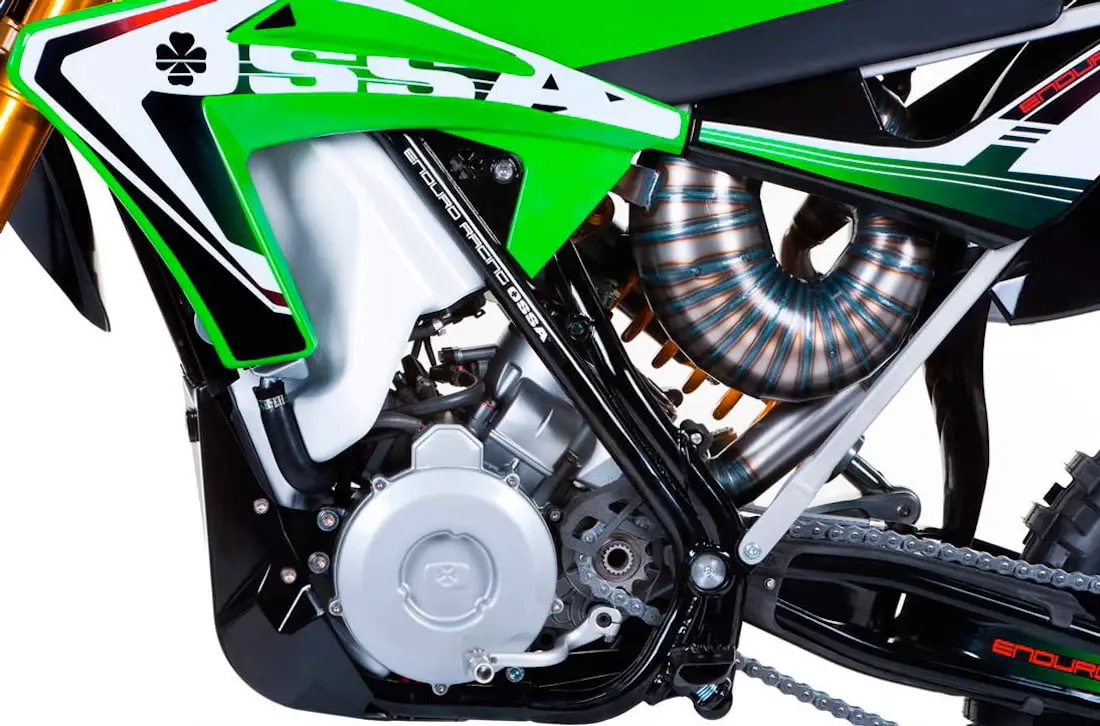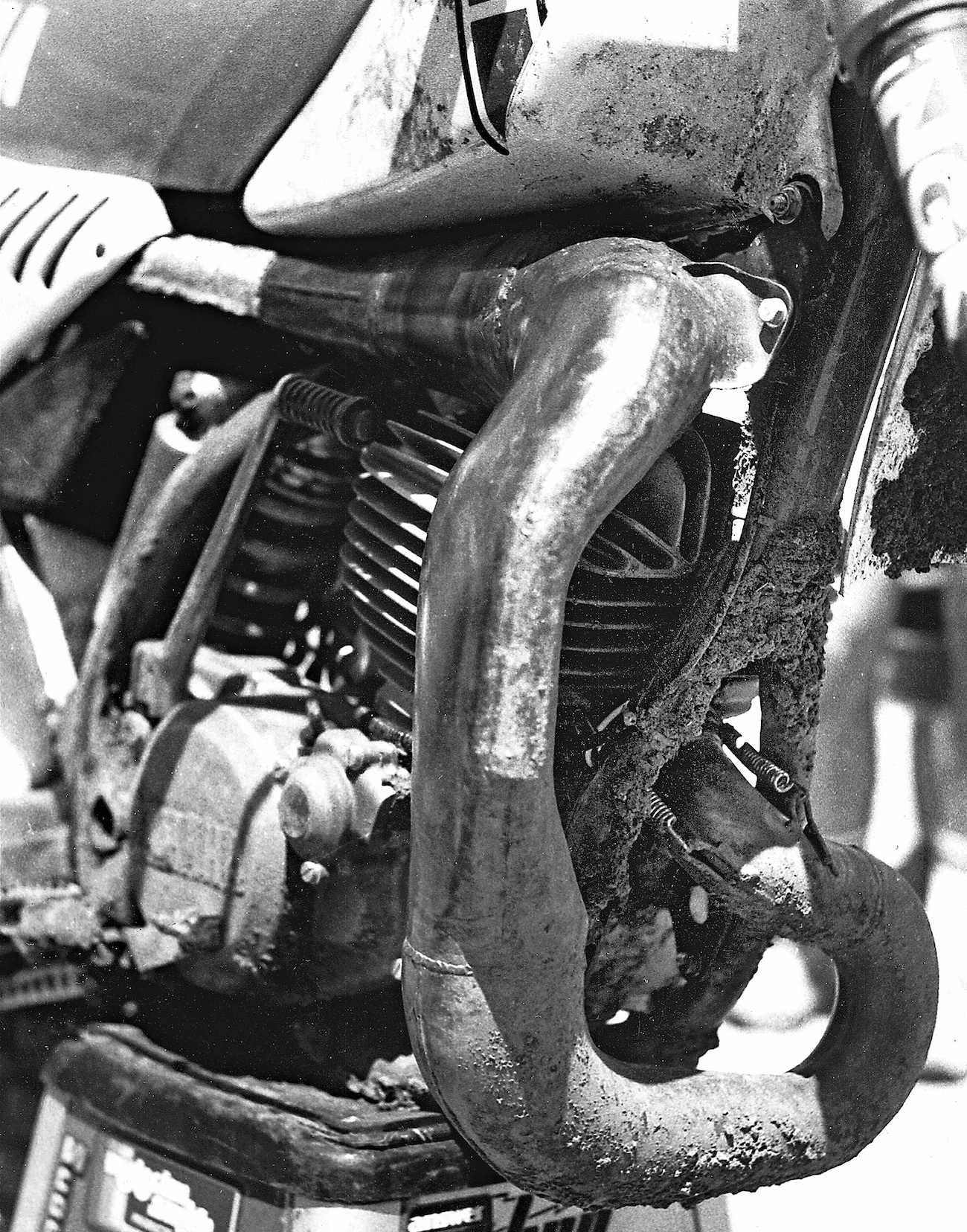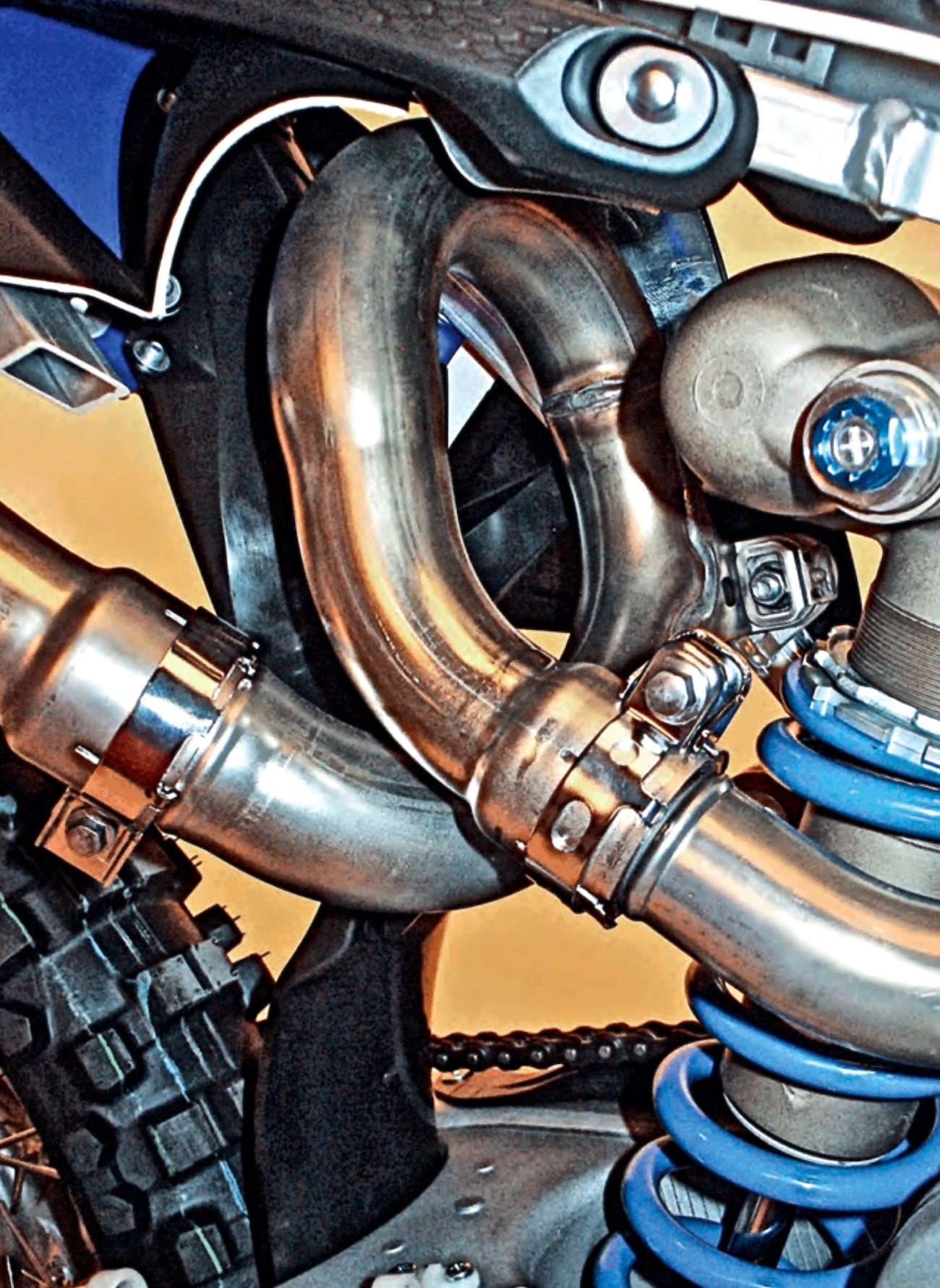ASK THE MXPERTS: THE PERFORMANCE EFFECTS OF EXHAUST PIPE BENDS
Dear MXperts,
It seems to me that the bends in an exhaust pipe would hurt the overall performance. Do bends in an exhaust pipe affect how well it works?
The short answer is yes they do, but it depends on more than just the bend itself. All motocross bikes have bends in their exhaust systems, and there is no way around the 180-degree bend that gets the exhaust pipe to redirect the spent gases out of the exhaust port to the back of the bike. In fact, a modern YZ450F has to take the exhaust pipe from the back of the cylinder, run it completely around to the front of the cylinder and then run it down the right side of the bike to the muffler.
 When Yamaha turned their YZ450F cylinder around backwards, they had to get creative. The result was the “Tornado” pipe. It lasted four years, but wasn’t popular or efficient.
When Yamaha turned their YZ450F cylinder around backwards, they had to get creative. The result was the “Tornado” pipe. It lasted four years, but wasn’t popular or efficient.
Obviously, the more gradual a bend, the easier it is to control tuned length and consistent pipe diameters inside the bent section of pipe; however, modern technology enables mandrel-bent tubing to make tight turns without pinching down the tube diameter. Pinching the tube diameter down in a bend kills power.
Take the 2010 to 2013 Yamaha YZ450F pipe as an example of how many bends are possible. The YZ450F pipe’s corkscrew design was so convoluted that Yamaha called it the “Tornado” pipe. If an exhaust pipe fits tightly to the machine, achieves its projected power output, reaches its required tuned length and does not pinch down the tube diameters in the bends, it doesn’t matter how many bends it has in it.
 Two-stroke and four-stroke pipes all have to work within the available space. The fuel-injected Ossa 300i’s two-stroke engine had a reverse cylinder which forced the pipe to snake through the rear of the frame.
Two-stroke and four-stroke pipes all have to work within the available space. The fuel-injected Ossa 300i’s two-stroke engine had a reverse cylinder which forced the pipe to snake through the rear of the frame.
Would it be better if the exhaust pipe were straight over its whole length? Yes, but it would not fit on the frame. MXA has been to R&D departments where they run straight pipes on engines bolted to the dyno. This is a cheap way to test a given exhaust system’s tuned length, pipe diameters and tapers, without having to concern themselves with making it fit on the bike. It provides a benchmark for comparing the same dimensions in a pipe that actually fits on the bike.
 Hakan Carlqvist’s factory Yamaha “Pancake” pipe was not designed for maximum power, but to allow fresh air to flow through the cylinder fins. They gave up power for engine cooling. Plus, Hakan felt that his YZ490 had too much power anyway.
Hakan Carlqvist’s factory Yamaha “Pancake” pipe was not designed for maximum power, but to allow fresh air to flow through the cylinder fins. They gave up power for engine cooling. Plus, Hakan felt that his YZ490 had too much power anyway.
Convoluted exhaust systems perform well on the track but have downsides that are outside the scope of the engine’s performance. Here are a few classic examples. The YZ450F Tornado generated a lot of heat directly on the rear shock. The Husaberg’s upside-down engine’s exhaust pipe could only be removed by taking the bike apart. Honda’s twice pipes add weight, costs and unnecessary complications for no gain in performance or power.





Comments are closed.